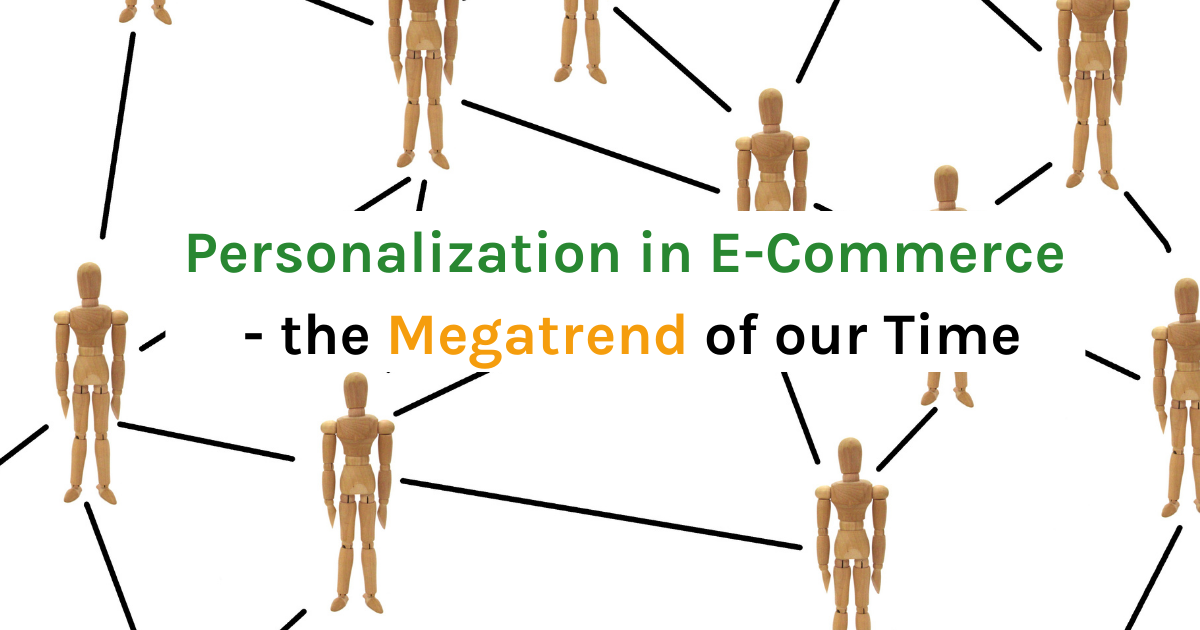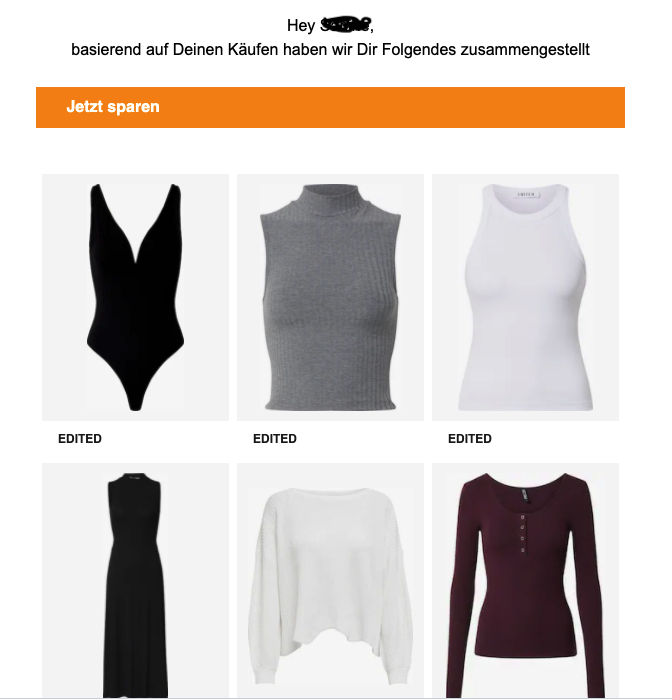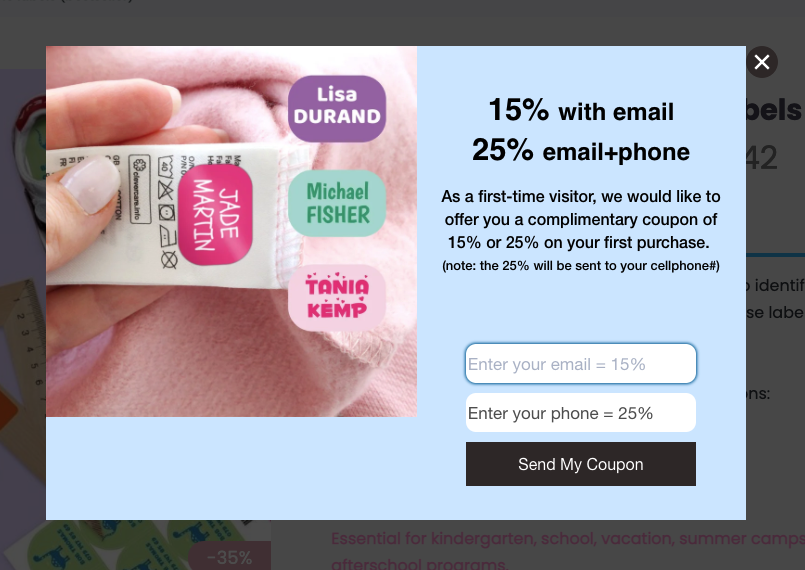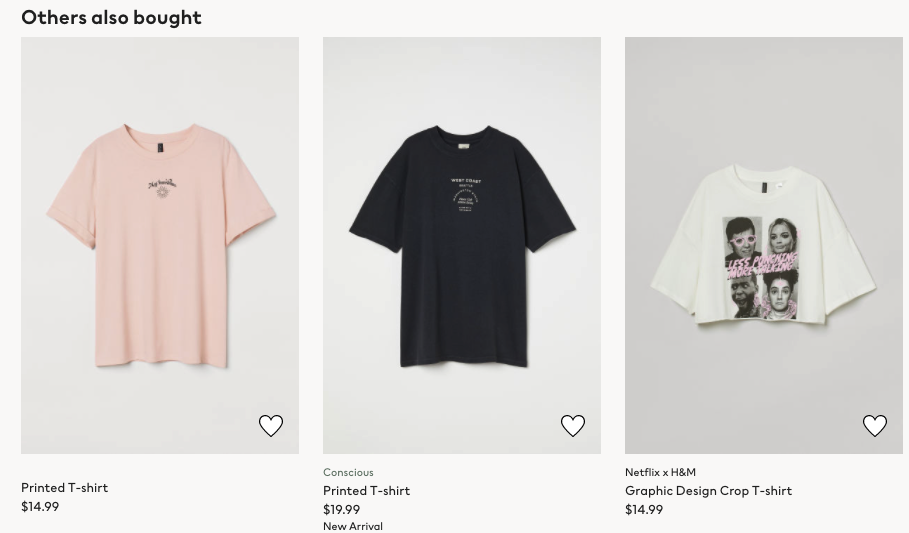
Personalization in E-Commerce - Definition, Meaning, and Opportunities
In recent years, our purchase behavior has shifted strongly to online shopping. The pandemic has intensified this trend even more. Before the online retail catch-up race, the customers were able to simply go to a store and be assisted by a salesperson. In the store, the products can be touched, tried on, or tested. Various products can be directly compared with each other, while the salesperson is there to help.
The situation has changed significantly with the rise of online retail. Online, items cannot be held in the hand and the personal shopping consultant is missing. The challenge that e-commerce faces is finding other ways to make it up for that.
Most of the companies from online retail are using advertising, newsletters, pictures, and product descriptions to ensure the communication with the customer and the product information and often try to convince the customer about the price. The excess of content and offers, however, leads to flooding customers with information, most of it unwanted. But customers want to be understood and be seen as individuals, as they are. This is the only way they can have a positive shopping experience.
It is widely known that a positive shopping experience is highly important for the success of the seller. According to McKinsey, this leads to 20% higher customer satisfaction and to up to 15% higher sales rate.
Personalization in digital communication and addressing is highly necessary to reach the customers and their individual needs.
Reasons that Require an Individual Approach
There are good reasons for offering the user online, individually adjusted communication.
1. Overload with Information
More and more purchases are being made online. Customers are flooded with a big amount of information. As a result, the digital environment has changed significantly for the consumers. Yet, the ability to process and perceive this information have not. For thousands of years, the human brain has functioned in the same way: when overstimulated, it filters out the relevant information. This leads to us being flooded with a big amount of content and advertisements, but not being able to notice them. Unless they are relevant! However, relevance is individual. Relevant is something that we are currently looking for or a topic we are currently receptive to. The rest is sorted out as uninteresting.
2. Generic Information
Which things are of interest to me as an individual? What directly corresponds to my wishes, my interests? Generic information is filtered out and only information that corresponds to me directly is being noticed. Personalized experiences have value and are seen as a relief. The customer feels understood and noticed: “This is me.”
Reasons why Retailers should Focus on Personalization in E-Commerce
Apart from satisfying customers’ needs, there is a further reason to rely on an individual approach in e-commerce: competing with other providers.
The COVID-19 pandemic has accelerated the tendency to shop online enormously and also forces classical stationary retail to sell products online. This is due to the fact that the increase in online retail has further intensified an already competitive environment.
However, Google and Amazon are the only ones getting rich during the process. Amazon is committed to having price leadership and has yet captured an increasingly high market share. Estimates for 2020 have shown an incredible share of 38% of the e-commerce market share in the United States.
Mid-sized E-Commerce Retailers need their Own Strategy
Medium-sized e-shop retailers cannot afford to compete on price. Therefore, the small and medium-sized e-commerce business needs its own strategy.
If competing with the big players on the price is not possible, it is possible to do so through personalization, in other words, addressing each customer individually, in order to win them over. This has already been recognized by some technology providers, and they offer various types of personalization for e-commerce.
As this is a complex subject area due to the number of possibilities, we want to take a closer look at the various fields of application and provide an overview of the personalization possibilities in e-commerce.
So what does E-Commerce Personalization mean?
“Customized” products, created according to personal preferences, such as self-designed sneakers or mixed muesli based on one’s individual taste, are familiar to everyone. But what does the term personalization in e-commerce mean?
The term `personalization` is broadly defined, not self-explanatory, and requires therefore a more precise definition.
Personalization is a cross-channel experience that addresses the customers’ wishes and goals. It is highly important for e-commerce, as it enables a targeted approach to potential customers and customers. With the help of the personalization of the user experience (UX), there is the possibility to bind customers and increase sales.
The term “e-commerce personalization” covers everything that leads to a personal experience while surfing the online shop.
It is not about selling what I intend to sell as an online shop. It is about offering the visitors on my website the shopping experience and recommendations they wish to receive, and offering them what they expect on their Customer Journey. This is the only way to reach customer satisfaction and thus customer loyalty.
Personalization is individual for each user. Retailers use all the available customer data, combined with artificial intelligence, to make him exactly the right offer that suits his current needs.
Figures & Facts
Through personalization in e-commerce, online retailers have opportunities that should not be missed. In this regard, figures and facts prove that personalization is an important topic in e-commerce and each online retailer must pay more attention to it.
- 80 % of buyers are ready to purchase from a company that offers personalized experiences (Epsilon)
- 44 % of consumers indicate they are more likely to place an order again after having a personalized shopping experience at a certain company (Segment)
- 75% of visitors leave the shop immediately if an uninteresting product is shown to them (Oxid)
- 48% of potential buyers abandon their purchase if it is not customized to their actual needs (Accenture, 12/2017)
- 98 % of all marketers believe that personalization influences customer behavior; 70 % assume this influence to be “strong” or even “extremely strong” ( Researchscape International 2019)
These figures clearly indicate that online retailers should not ignore the personalization trend if they want to compete for customers.
Advantages of E-Commerce Personalization
However, not only statistics regarding the effects of e-commerce personalization with respect to the potential buying behavior of customers provide good arguments for following this trend.
The benefits of personalization measures are clear to see:
- There are fewer shopping cart abandonments thanks to customized product recommendations.
- The size of the shopping cart increases, as the customer is given information based on his interests.
- This leads to fewer returns.
- Conversions increase, as the potential buyer is given customized content and thus marketing goals are reached, such as expanding the email lists or an increase among the webinar participants. Furthermore, these measures turn the potential buyers into buyers.
- Customer satisfaction increases, as satisfied customers share their experiences with their friends and further recommend the shop based on their personal experience.
- Lasting customer loyalty is created because loyal customers are the result of a positive, customized shopping experience.
- The purchase rate increases, because more and more visitors decide to buy recommended products.
- Costs decrease through the automation of personalized content. Of course, many types of personalization can be done manually and delivered to selected customers. However, automation saves a lot of time and costs - and this by an increase of the user-specific relevance.
Personalization in E-Commerce – the Possibilities
Personalization in e-commerce has many facets. It is hard to mention what are the possibilities and types of personalization. It always depends on how one understands this term. Among other things, it can be categorized into off-site and on-site targeting. Some examples of both categories are listed below.
Off-Site-Targeting
Pixel-based social media targeting:
Targeting on Facebook, Instagram, Twitter, and Pinterest.
Email automation:
One-to-one transaction automation via personalized emails after a shopping cart abandonment or with product recommendations after a finalized purchase.

On-Site Targeting
Navigation:
Display navigation elements that fit the customer’s behavior. In this way, visitors can reach their goals faster and easier.
Banner:
Dynamizing and displaying banners to match the behavior of each individual visitor and displaying exactly what the customer is currently interested in. This can be in the form of pop-ups of header/footer banner, as well as slides.
Discount offers:
Targeted display of discounts for customers for whom they are relevant at that moment. This can be done via various channels, such as push notifications with a personalized coupon sent to the phone.

Content display:
Displaying editorial content in newsletters, videos, or checklists that match the behavior of each customer precisely. When displayed at the right time, the customer regards this as relevant information and not as an advertisement.
Product recommendations:
Product recommendations for each individual customer based on previous behavior, search history, demography, and other personal data.
Up-Selling & Cross-Selling Strategy
This also refers to product recommendations. In upsell, the customer is given product recommendations that are customized for him but are more expensive compared to what he bought in the past or had in his shopping cart. In cross-sell, the customer is given product suggestions based on his previous browsing and purchase behavior, regardless of price.
Everybody has already seen the recommendations “You might like this...” and “Others also bought…”. These are typical examples of the cross and upsell strategies.

All the already mentioned personalization strategies are not new and are already being implemented by many shops. Addressing individual customers is automated by them, yet they are not able to adjust the content to the different interests of the customers. Manually adjustments would be a great effort, which is usually avoided by store operators. Even though most online shops are well-structured, they tend to have less optimized product pages.
Automated content creation is the solution, in this case, allowing content to be customized and automated for each customer. New content is constantly being generated, depending on the Customer Journey and context. This is the latest innovation among the personalization strategies available.
The latest Innovation among the Personalization Strategies - Personalized Content for each Visitor
Online retailers dispose of a great amount of customer data. With their help, each product page can be turned into a fully personalized offer for the individual customer. Companies can already use these data sources they have on hand and create personalized content. This is possible thanks to a Natural Language Generation (NLG) software.
Automatic Personalization of Product Descriptions in Online Retail
Automated content or product descriptions are being generated based on structured data sources with the help of software. AX Semantics offers this type of software as a flexible SaaS solution. First-party behavior data and psychographic analysis can be used in a GDPR-compliant manner, in order to create personalized content for each visitor of a website.

With Personalized Commerce, the content personalization software from AX Semantics , the company has managed to develop a way to create, test, and optimize content for product pages in such a way that each individual customer feels addressed, thus increasing the likelihood of increased conversion. The combination of automated content generation with a hyper-personalized customer approach simply uses first-party real user data. In this way, the software creates individually customized product descriptions and category pages that fully remain GDPR and CCPA compliant.


